Spice Up Your Life: The Top 10 Popular Indian Spices You Can’t Live Without!
If you've ever bitten into a masala-dosed samosa or inhaled the aroma of a simmering curry, you know Indian food is more than just flavor—it’s an experience. But what gives Indian dishes their signature depth and complexity? The answer lies in its spice cabinet. From cumin to cardamom, India's spice game is strong.
In this blog, we’ll take you on a whirlwind tour of the top 10 popular Indian spices that are not only kitchen staples but also globally celebrated. Whether you're a seasoned chef or a home cook looking to elevate your meals, these spices will transform your cooking game—and yes, we’re throwing in some super practical tips and visual charts to help you out!
Table of Contents
- Turmeric – The Golden Wonder
- Cumin – Earthy & Essential
- Coriander Seeds – Fresh & Nutty
- Cardamom – Queen of Spices
- Fenugreek – Bitter Meets Sweet
- Mustard Seeds – Pop Goes the Curry
- Cloves – Tiny Powerhouses
- Cinnamon – Warmth in a Stick
- Red Chili Powder – Fire in Every Bite
- Asafoetida – The Funky Fix
- Visual Spice Comparison Chart
- Pro Tips for Using Indian Spices
- Conclusion
1. Turmeric – The Golden Wonder

Turmeric isn’t just a staple in Indian kitchens—it’s practically a cultural icon. Known as “haldi” in Hindi, turmeric adds both color and health benefits to countless dishes.
- Anti-inflammatory and antioxidant properties (thanks to curcumin)
- Gives rice, dals, and curries that iconic golden hue
- Used in Ayurvedic medicine for centuries
Pro Tip: Add a pinch of black pepper when using turmeric to boost absorption of curcumin by up to 2000%!
2. Cumin – Earthy & Essential

Cumin, or “jeera,” is the backbone of many Indian spice blends. Its nutty, earthy flavor makes it indispensable in everything from street food to royal feasts.
- Promotes digestion
- Used in garam masala, panch phoron, and chaat masala
- Roasting enhances its aroma
Fun Fact: Jeera water (cumin-infused water) is a popular summer cooler in North India!
3. Coriander Seeds – Fresh & Nutty

Coriander seeds may look like dried-up cilantro, but they pack a completely different punch—nutty, citrusy, and subtly sweet.
- Used in powdered form or whole
- Common in South Indian sambars and chutneys
- Often paired with cumin for balance
Pro Tip: Toast seeds before grinding to unlock a deeper flavor profile.
4. Cardamom – Queen of Spices

If there’s one spice that screams luxury, it’s cardamom. Used sparingly, it transforms desserts, chai, and biryanis alike.
- Expensive due to labor-intensive harvesting
- Available in green and black varieties
- Adds a floral, minty note to dishes
Did You Know? India produces over 50% of the world's cardamom!
5. Fenugreek – Bitter Meets Sweet
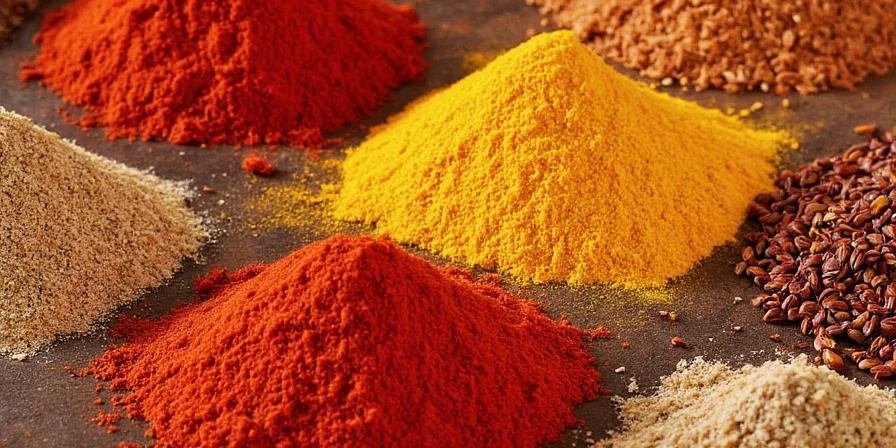
Fenugreek (“methi”) has a unique flavor profile—bitter when raw, slightly sweet when roasted. It’s a must-have in pickles, parathas, and even medicines.
- Helps control blood sugar levels
- Used in spice blends like panch phoron
- Popular in North Indian winter dishes
Pro Tip: Soak fenugreek seeds overnight to reduce bitterness in recipes.
6. Mustard Seeds – Pop Goes the Curry
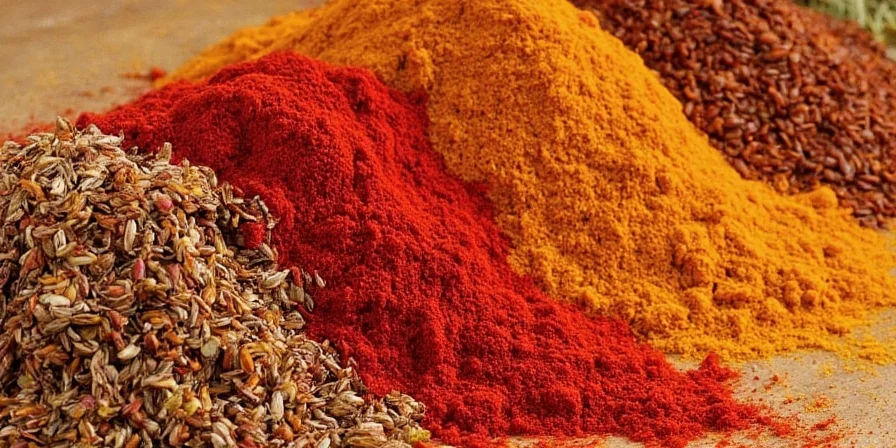
When mustard seeds hit hot oil, they crackle and pop like popcorn—this technique, known as “tadka” or “tempering,” kicks off many South Indian dishes.
- Comes in yellow, brown, and black varieties
- Essential in sambar, rasam, and pickle making
- Used in Ayurveda for respiratory issues
Pro Tip: Use mustard oil for a stronger kick or switch to vegetable oil if subtlety is your style.
7. Cloves – Tiny Powerhouses

These little nails might be small, but they bring BIG flavor. Cloves are often used in meat dishes, biryanis, and festive sweets.
- Antimicrobial and anti-inflammatory
- Used whole or ground
- Key ingredient in garam masala blends
Fun Fact: Chewing a clove can relieve toothaches naturally—no dentist required (temporarily!).
8. Cinnamon – Warmth in a Stick

While cinnamon is found in many cuisines, Indian cinnamon (also called cassia) is darker and more aromatic than its European cousin.
- Used in both sweet and savory dishes
- Great for heart health and blood sugar regulation
- Often added to biryanis and spiced teas
Pro Tip: Crush cinnamon sticks before adding to stews or curries for better infusion.
9. Red Chili Powder – Fire in Every Bite
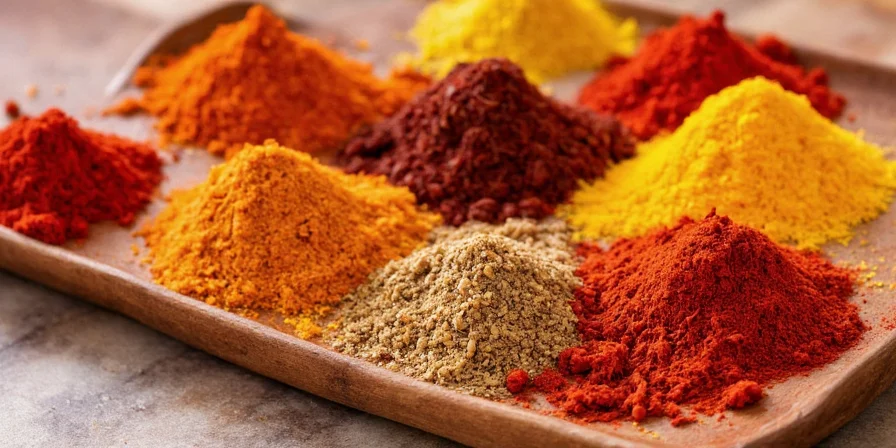
No Indian pantry is complete without a healthy dose of red chili powder. It brings heat, color, and a touch of drama to every dish.
- Varies in heat depending on brand and region
- Used in almost every spice blend
- Enhances appetite and metabolism
Caution: Always wash hands after handling chili powder—even your nose will thank you later.
10. Asafoetida – The Funky Fix
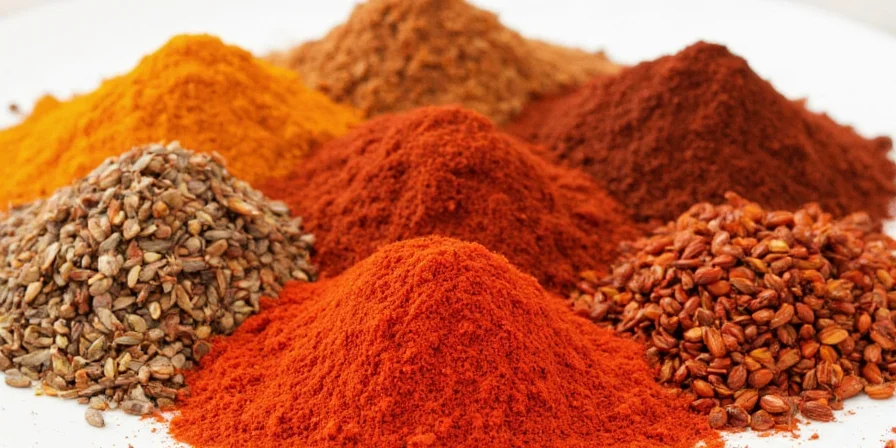
Also known as “hing,” this resin-like spice smells like old gym socks… until it hits the oil. Then, magic happens—it turns into an umami-packed flavor bomb.
- Used in small quantities
- Excellent for digestive health
- Perfect in lentil dishes and pickles
Pro Tip: Store in an airtight container—open near a fan unless you want to clear the room!
Indian Spices Comparison Table
| Spice | Flavor Profile | Primary Use | Health Benefit | Best Paired With |
|---|---|---|---|---|
| Turmeric | Earthy, bitter | Curries, rice, teas | Anti-inflammatory | Black pepper |
| Cumin | Nutty, smoky | Dals, soups, snacks | Improves digestion | Coriander |
| Coriander | Citrusy, woody | Soups, pickles, chutneys | Rich in antioxidants | Cumin |
| Cardamom | Floral, minty | Biryani, tea, desserts | Improves breath | Milk |
| Fenugreek | Bitter-sweet | Parathas, pickles | Regulates blood sugar | Curry leaves |
| Mustard Seeds | Peppery, sharp | Tadka, pickles | Boosts immunity | Urad dal |
| Cloves | Woody, spicy | Non-veg dishes, chai | Antibacterial | Cinnamon |
| Cinnamon | Warm, sweet | Meat, desserts | Lowers cholesterol | Cloves |
| Red Chili | Hot, intense | All spice blends | Boosts metabolism | Cumin |
| Asafoetida | Pungent, umami | Lentils, pickles | Reduces bloating | Onion |
Pro Tips for Using Indian Spices Like a Pro

- To roast or not to roast? Whole spices like cumin, coriander, and mustard seeds should be dry-roasted before grinding for maximum flavor.
- Storage matters. Keep spices away from heat and light. Airtight containers work best.
- Fresh is best. Grinding your own spices ensures potency and aroma far superior to store-bought powders.
- Layer your flavors. Start with mustard seeds or cumin in hot oil, then add aromatics like onions and garlic before layering in ground spices.
- Don’t skip the tempering. A quick tadka of curry leaves, mustard seeds, and hing can rescue a bland dish in seconds.
- Balance the bitterness. A pinch of sugar or tamarind paste can neutralize the bitterness of fenugreek or turmeric-heavy dishes.
- Use garam masala at the end. This warm, aromatic spice mix loses its punch if cooked too long—sprinkle it in during the last few minutes.
Conclusion: Embrace the Spice Revolution
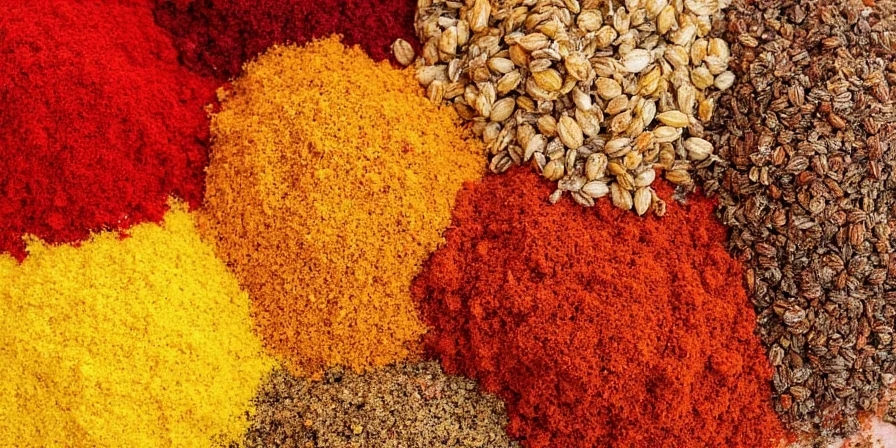
Indian spices aren’t just ingredients—they’re storytellers, healers, and flavor architects rolled into one. Each spice tells a tale of ancient traditions, regional specialties, and culinary evolution.
Whether you’re making a fiery vindaloo or a soothing korma, these ten popular Indian spices will become your new best friends. So go ahead, raid your spice rack, experiment with bold combinations, and remember: When life gives you blandness, reach for the jeera, haldi, or hing!
And hey—if you’re feeling extra adventurous, why not try your hand at making your own homemade garam masala? After all, every great chef starts with a dash of curiosity and a sprinkle of spice.

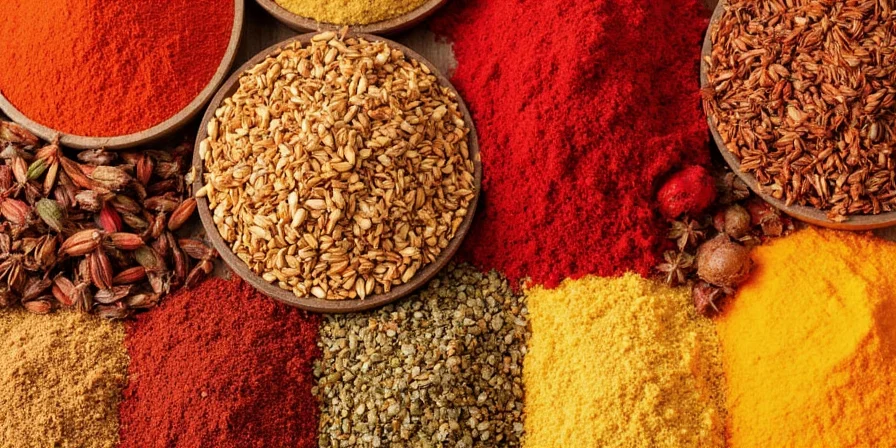









 浙公网安备
33010002000092号
浙公网安备
33010002000092号 浙B2-20120091-4
浙B2-20120091-4